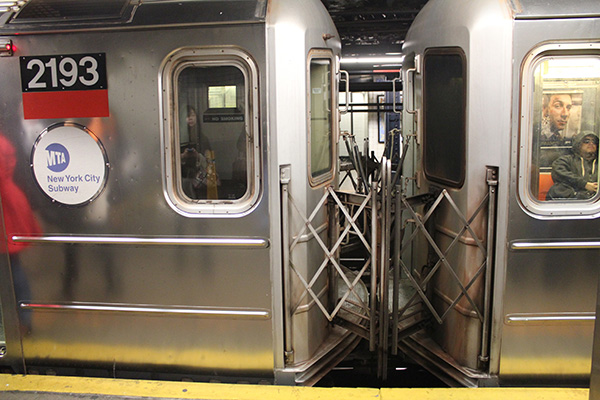
Subway cars may become less crowded in the future. The Metropolitan Transit Authority’s Capital Needs Assessment for 2015 to 2034, released this month, describes future plans of the company, including the purchasing of trains with open gangways.
Open gangways, like MTA’s articulated buses, un-ify all the cars within a train, creating one single car.
“The open gangway mo-del is something we are looking at to improve tr-affic flow in and out of subway to reduce loading times and even out available space in the cars,” MTA director of external communications Adam Li-sberg said.
Thomas Prendergast, CEO and chairman of the MTA, said at a New York State tourism campaign unveiling on Monday that this future improvement is seriously being considered.
“The systems that are purchasing cars now are buying what they call ‘articulated cars’ that have open gangways,” Prendergast said at the event. “It’s not the entire length of the train. It’s generally three or four cars, and they’ll have two of those units put together, which is what the [Brooklyn-Manhattan Transit Corporation] had back in the thirties.”
Urban planning and transportation professor at NYU Wagner Zhan Guo said the gangway could alleviate some of the congestion in many subway cars.
“Think about the space between the two passenger cars,” Guo said. “If that space could be used for the passenger capacity instead of not used, I think that could increase the capacity of the subway, even with the same kinds of platforms [used today] and of course the same kinds of subways.”
According to The New York Times, the open gangway proposal said the Toronto Transit Commission repor-ted an eight to 10 percent increase in available capacity since their introduction of the open gangway model two years ago. Despite Toro-nto’s figures that affirm Guo’s predictions, the MTA is not committing to the idea just yet.
“This is just a concept at this time,” Lisberg said. “We don’t even have a physical mockup for this yet.”
LS freshman and New York City native Abbey Rowe said the MTA should focus on service expansion rather than upgrades, especially to the Lower East Side where she lived.
“It seems unnecessary,” Rowe said. “Making one continuous car isn’t going to be worth the cost of replacing the existing ones or the cost of changing the tracks to accommodate them.”
Although cost is definitely a key factor in consideration for the proposal, the MTA plans to look forward to the future.
“You have to figure that of our past 35 plus years, that’s well into the 21st century, and we don’t want to be buying a car that’s out of date with what most of the industry is doing,” Prendergast said.
A version of this article appeared in the Thursday, Oct. 24 print edition. Patrick Anker is a staff writer. Email him at [email protected].
























































































































































